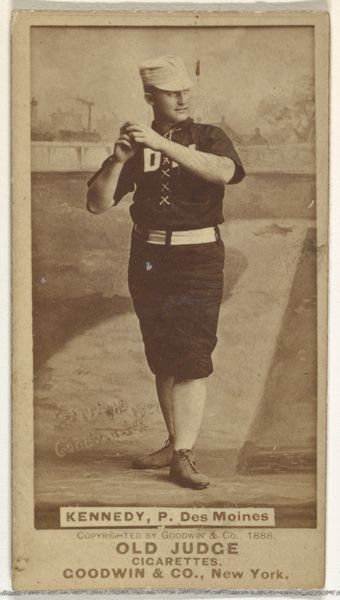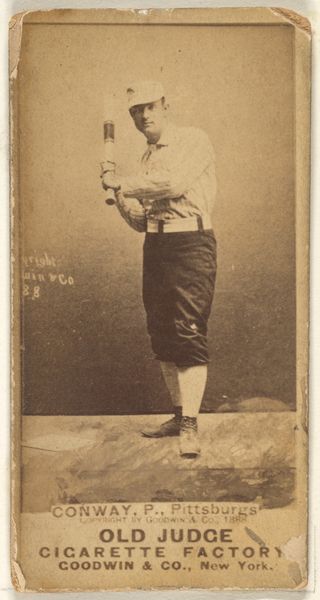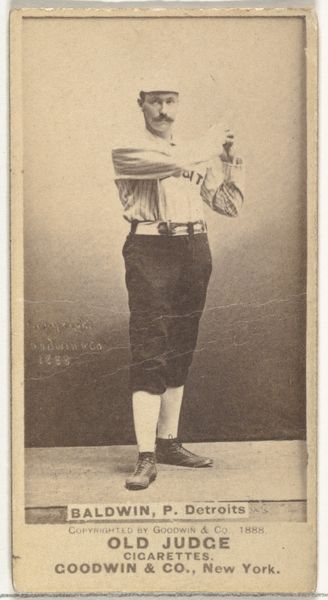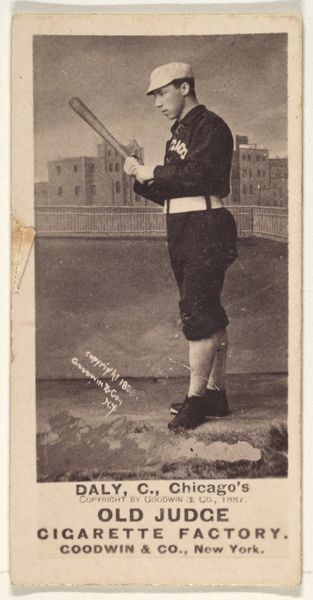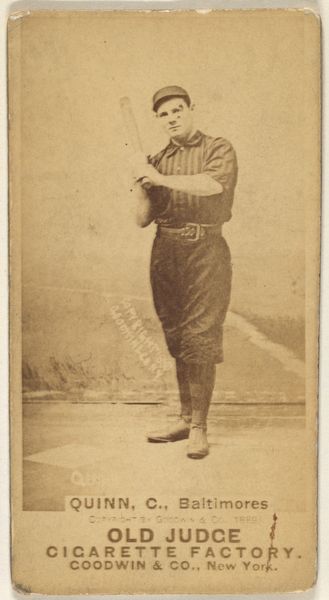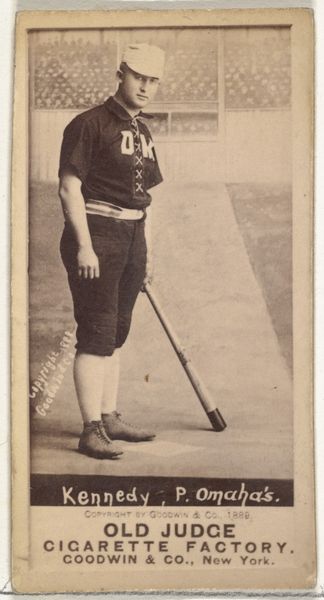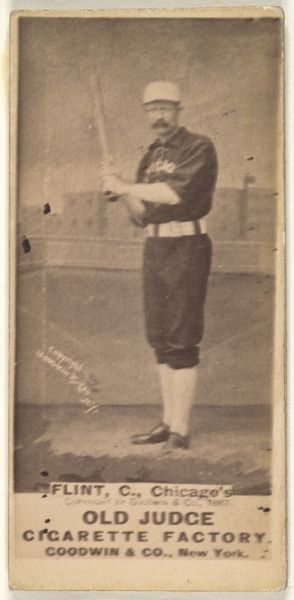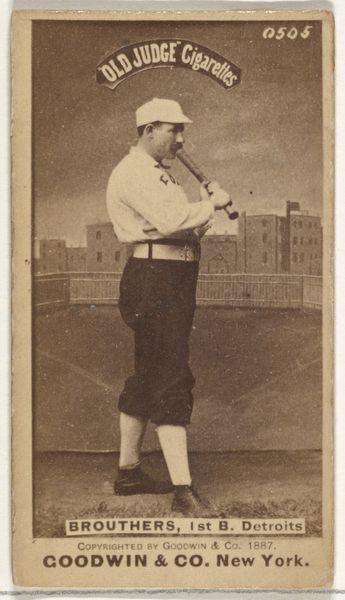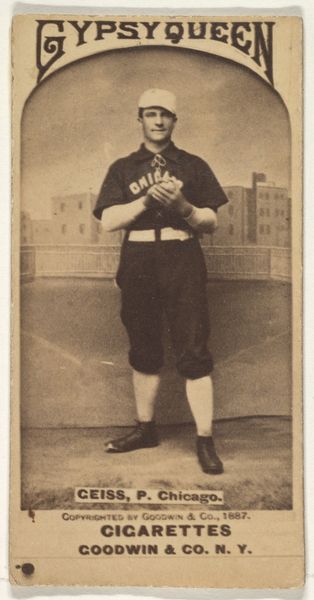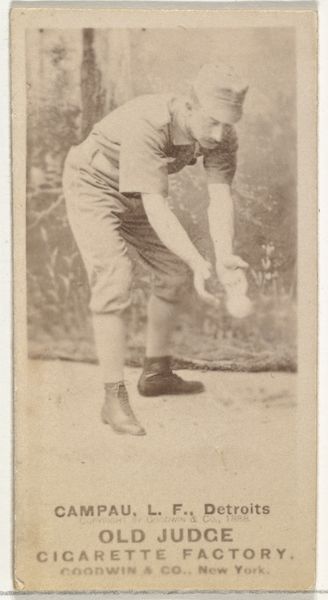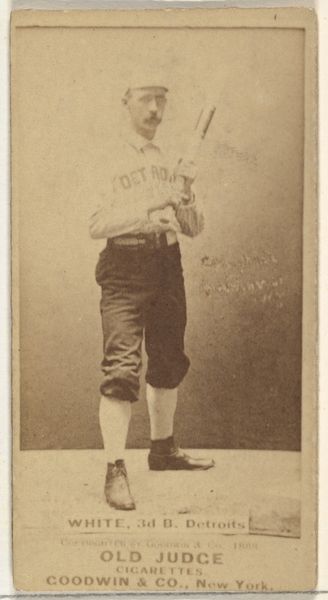
Theodore A. "Ted" Kennedy, Pitcher, Des Moines Prohibitionists, from the Old Judge series (N172) for Old Judge Cigarettes 1888
0:00
0:00
print, photography
#
portrait
#
16_19th-century
# print
#
baseball
#
photography
#
historical photography
#
19th century
#
men
#
athlete
Dimensions: sheet: 2 11/16 x 1 3/8 in. (6.9 x 3.5 cm)
Copyright: Public Domain
Editor: This is a fascinating object. It’s a print, a baseball card really, from 1888. It’s titled "Theodore A. 'Ted' Kennedy, Pitcher, Des Moines Prohibitionists, from the Old Judge series (N172) for Old Judge Cigarettes," made by Goodwin & Company. It feels very much of its time, stiff and formal, but also kind of…ordinary? What draws your attention when you look at this? Curator: I see a very specific nexus of commerce, sport, and representation. This isn’t just a picture; it's a mass-produced object tied directly to the burgeoning cigarette industry. The "Old Judge" series used these cards as incentives. Think about the process: photography, printing, distribution within cigarette packs. How does that mass production and consumption influence our perception of Kennedy and, by extension, the sport of baseball itself? Editor: So, you’re saying the card's value isn’t just about Kennedy or baseball, but about the cigarette company making and distributing it? Curator: Precisely. The photograph becomes a commodity, embedded in a network of labor – from the photographer to the factory workers assembling the packs. Who is profiting from this image, and at whose expense? Where was the paper sourced from, how were the printing plates made, what were the working conditions like? These questions are essential to understanding the full picture. The “real” value comes from the cultural power these images accrue through circulation. Editor: That really changes how I see it. I was focused on the sport itself, but now I'm considering the hidden industry supporting it. It makes me wonder how this early form of advertising shaped perceptions of athletes and tobacco. Curator: Exactly. And who had access to these images? Who was being marketed to, and how did that reflect the social dynamics of the time? What was the impact of distributing these baseball players cards versus more “fine art” images? These questions around materials and mass production fundamentally alter our understanding of this object. Editor: That’s incredibly insightful. I'll definitely look at these kinds of objects with a much more critical eye now, considering the whole system behind them.
Comments
No comments
Be the first to comment and join the conversation on the ultimate creative platform.
